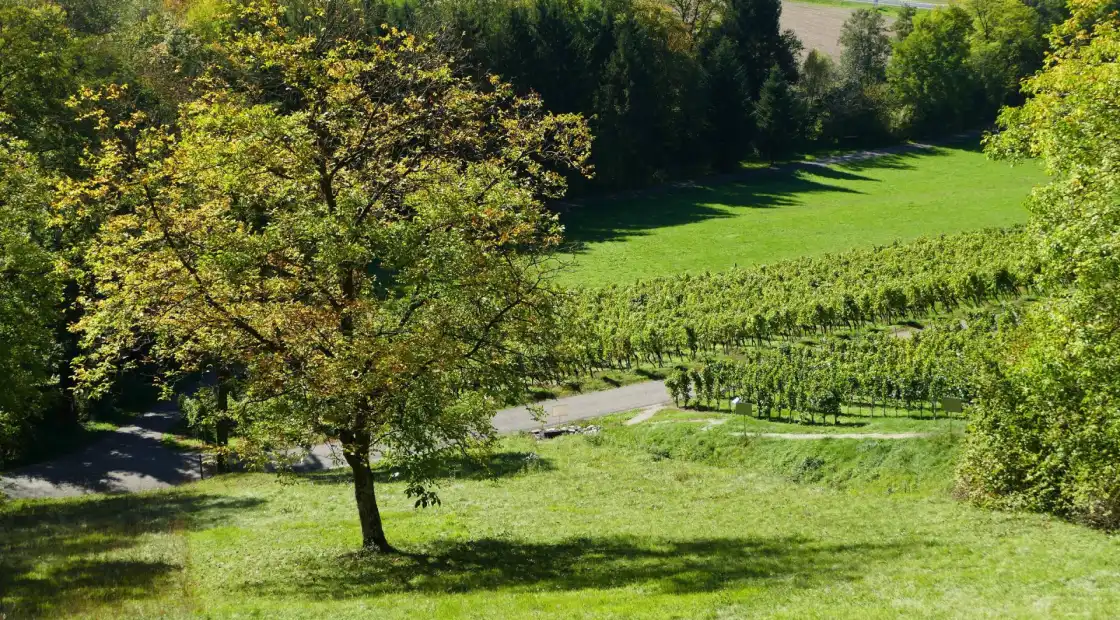Sharing experience in viticulture and agroforestry

Reducing chemical use in viticulture
Viticulture and agroforestry: at SIVAL 2024, a conference explored the steps taken to reduce the use of chemicals in viticulture, while integrating organic and environmentally-friendly practices. Winegrower and consultant Marie-Pierre Lacoste-Duchesne shared her experience of putting agroecology principles into practice, and more specifically agroforestry, on her property(Château La Clotte-Cazalis, certified AB). This Gironde estate serves as a concrete example of the importance of switching to certified organic practices. After starting out with conventional technical itineraries, the development of botrytis led to a review of viticultural practices. The transition to organic farming, begun in 2012, took shape with full certification in 2015 to reduce chemical impact and promote ecosystem balance.
The conference emphasized the need to adapt agricultural models to the current climate. Winegrowers need to produce better, with greater regularity, while respecting environmental requirements. This intervention also demonstrated that reducing chemical inputs improves soil resilience and the optimal development of the fungi needed to produce noble rot. The transformation of agronomic practices is part of a long-term vision for the sustainable economic performance of farms.
Agroforestry and crop diversification
The benefits of agroforestry for agricultural production were also discussed, including its impact on soil stabilization, residual nutrient management and erosion. An agroforestry experiment implemented since 2012 on one farm illustrated these benefits. The planting of over 600 trees, with species such as hornbeam, elm and ash, was planned according to the width of farm machinery to maintain practical compatibility. The choice of tree species and their arrangement to minimize the loss of cultivated area proved essential. On ten hectares of corn cultivation, the results revealed improved soil resilience and no loss of vigour near the trees, even in dry, hot summers such as that of 2022.
For the vineyards, agroforestry was introduced in 2017 with a design incorporating fruit hedges and biodiversity islands. The distance between trees and vines has been adjusted to balance sunlight requirements and protect crops from extreme temperatures. This model also encourages the circulation of wildlife, notably pollinators and birds, which rely on this ecological continuity. Experiments on islands of vines and fruit hedges made up of trees such as apricot and pear illustrated the importance of varietal and rootstock choices in optimizing production and respecting agronomic constraints.
Integrated management and multifunctionality of trees
Integrated management of the use of trees in agricultural systems is a key aspect of the approach adopted at SIVAL. Trees are not limited to fixed planting; their management, size and functions must be anticipated. Experimentation with a diversified fruit hedge has enriched the soil, provided climatic protection and hosted a wide variety of fauna. Specific management techniques for fruit trees, such as trellising and pruning, show that there are suitable solutions for all farming configurations.
Beyond direct production, trees are used in ancillary roles such as timber production, nitrogen fixation or ecosystem enhancement. Their organization in the agricultural landscape can include naturally regenerated areas or strategic plantings to interconnect existing habitats. For example, at the edges of dykes or wetlands, trees such as osier willow enhance biodiversity and can be put to good use for craft purposes. Participatory tree-planting initiatives were also mentioned as opportunities to raise awareness and mobilize local stakeholders around agroforestry projects. Finally, complementary practices such as animal traction and eco-pasture complement overall farm management, integrating rapid rotations to minimize impact on the soil. These approaches demonstrate the importance of an overall balance between crops, soils and the plants present, with a view to agro-ecology and agricultural transition.